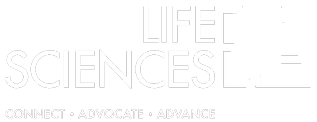 Most companies are fully aware of Form 5500 reporting requirements related to their 401(k) plans, but are less familiar with the Form 5500 reporting requirements for their health and welfare benefit plans.
Most companies are fully aware of Form 5500 reporting requirements related to their 401(k) plans, but are less familiar with the Form 5500 reporting requirements for their health and welfare benefit plans.
Requirements: Most employer-sponsored health and welfare benefit plans, including, but not limited to, group health, dental, vision, life insurance, disability insurance, voluntary worksite benefits (typically, but not always), and health flexible spending account (FSA) plans are subject to the reporting requirements under the Employee Retirement Income Security Act (ERISA) of 1974.
A Form 5500 is due to be filed with the Department of Labor (DOL) within seven months after the end of the plan year.
Exemptions: While there are a few common exceptions to filing for smaller plans and those sponsored by certain governmental and church plans, most employers who are filing Form 5500 for their retirement plans will also have Form 5500 reporting requirements for their health and welfare plans. Certain funding types (VEBAs, Trusts) may not be exempt based on size, however.
Normal Annual Filing: Once Schedule A information is available on the plan, from the carrier or third-party administrator (TPA), this information, along with some general participant enrollment information, is used to complete the filing. So long as company ownership, participation, and plans offered haven’t changed from year to year, it’s a fairly simply process.
It is worth reviewing the filing history of all plans subject to ERISA for all prior years to rule out any delinquencies in advance of filing for the current year. If all is in order, the filing deadline is the last day of the seventh month after the end of the plan year. Extensions, of up to 2.5 months, are available if the company applies prior to the initial deadline by filing Form 5558 with the Internal Revenue Service (IRS).
Failure to File and Remedy: If a Form 5500 filing is determined to be delinquent, the company is potentially subject to penalties imposed by the DOL (up to $1,100 per day) if the DOL discovers this before the return is filed electronically. The company can voluntarily “enter” the DOL’s delinquent filer amnesty program. The program is formally named the Delinquent Filer Voluntary Compliance Program (DFVCP) and entering it will eliminate the risk of any future penalty associated with the delinquent Form 5500 returns. However, the DOL still imposes a lower, capped dollar penalty, which is assessed on a “per plan” basis.
The first step for a DFVCP filing is in defining the applicable plans and plan years along with the due date for each plan, historically. Correction is generally suggested as far back as the delinquency goes, or minimally as far back as documentation can be provided. That said, many companies choose to internally review all options and risks.
Preparation of Filings: The DOL mandates electronic filings under its EFAST2 system and it can be challenging for employers to prepare their own Form 5500 filings. Defining whether, and which of, your plans are subject to the ERISA reporting requirements is the best first step of the ERISA reporting process.
Because the forms resemble IRS tax forms, companies often assume that an accountant is needed for preparation. This is not necessarily the case and it is more common to rely on a benefits consultant with domain expertise. These consultants routinely determine filing requirements, have experience dealing directly with the DOL (not IRS), and transmit hundreds of filings annually.




